class: center, middle, inverse, title-slide # Regional Disparities and Convergence Clubs in Indonesia: ## New District-Level Evidence 2000-2017 ### Carlos Mendez<br /><a href="https://carlos-mendez.rbind.io" class="uri">https://carlos-mendez.rbind.io</a><br /><br />Associate Professor<br />Graduate School of International Development<br />Nagoya University<br /> JAPAN ### Prepared for the 2020 Fall Meeting of the Japan Association for Applied Economics (JAAE) <br /><br />[ Slides and paper available at: <a href="https://quarcs-lab.org/research" class="uri">https://quarcs-lab.org/research</a> ] --- class: center, middle <style type="text/css"> .highlight-last-item > ul > li, .highlight-last-item > ol > li { opacity: 0.5; } .highlight-last-item > ul > li:last-of-type, .highlight-last-item > ol > li:last-of-type { opacity: 1; } </style> ### Joint work with Anang Gunawan (Ministry of Development Planning of Indonesia) <br /> Harry Aginta (Central Bank of Indonesia and Nagoya University) --- class: middle, center # A summary of the paper in 2 slides... --- class: ## Motivation: - **Large regional disparities** across Indonesia (Akita, 2002, Esmara 1975; Mishra 2009) -- - Provinces of Indonesia appear to **convergence to TWO separate clubs** (Kurniawan et al., 2019; Mendez 2020; Mendez and Kataoka, 2020) -- - Lack of studies using **district-level data** -- ## Research objective: (Re)evaluate the **evolution of regional income disparities** with an emphasis on the formation of **multiple convergence clubs** at the district level -- - Would all districts eventually converge to a **common long-run equilibrium**? - If not, **how many long-run equilibria** can be identified? -- ## Methods: - Classical sigma and beta convergence (Barro and Sala-i-Martin, 1992) - **Relative convergence** (Phillips and Sul, 2007, 2009) -- ## Data: - New data covering **514 districts over the 2000-2017** period (Gunawan et al., 2019) --- class: middle, highlight-last-item ## Main Results: 1. On average, income **disparities have reduced** - Initially poor regions are catching up with *initially rich regions* -- 2. The hypothesis of a **common long-run equilibrium is rejected** - Districts are converging to **FIVE clubs with parallel trends** -- 3. Regional convergence is **stronger within clubs** -- 4. The spatial distribution of the clubs suggest a **potential role for spatial externalities** --- class: middle # Outline of this presentation 1. Overview of the data - Based on the classical convergence approach (Barro and Sala-i-Martin, 1992) 2. A modern convergence framework (Phillips and Sul, 2007, 2009) - Convergence test (intuition) - Convergence clubs (intuition) 3. Main results of the paper - Reject the hypothesis of a common long-run equilibrium - Five local convergence clubs - Stronger patterns of beta and sigma convergence within clubs - Lack of convergence across clubs - The clubs show strong signs of spatial dependence <br /> <br /> [ Slides and paper available at: https://quarcs-lab.org/research ] --- class: center, middle # (1) Overview of the data Evolution of regional disparities **on average** --- class: center # Beta convergence approach 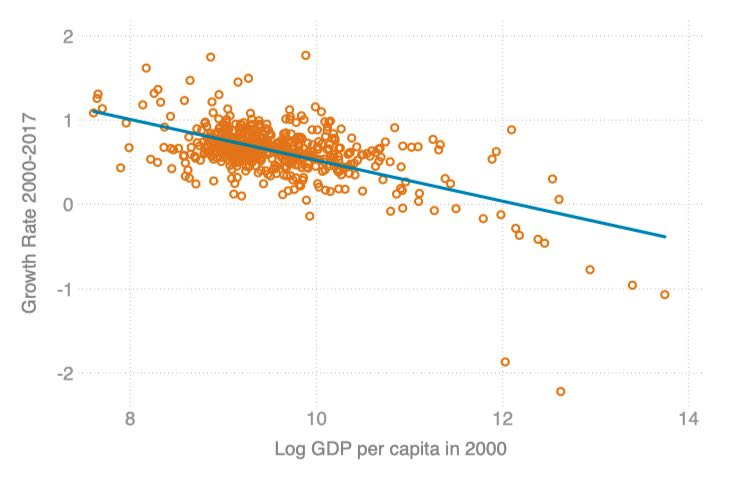 **On average**, initially poor regions are growing faster than initially rich regions --- class: center # Sigma convergence approach  **On average**, regional income disparities have been decreasing over time --- class: center, middle # (2) A modern convergence framework Convergence test (intuition) Convergence clubs (intuition) --- class: middle # Relative convergence framework (sketch) - First, define a relative transition parameter, `\(h_{it}\)`, as `$$h_{it}=\frac{y_{it}}{\frac{1}{N}\sum_{i=1}^{N}y_{it}}$$` -- - Second, define the convergence hypothesis as `$$H_{t}=\frac{1}{N}\sum_{i=1}^{N}\left(h_{it}-1\right)^{2}\rightarrow 0$$` -- **In other words, when the relative transition parameter converges to unity, `\(h_{it}\rightarrow1\)`, the cross-sectional variance converges to zero, `\(H_{t}\rightarrow0\)`** -- - Thrid, Phillips and Sul (2007) test this hypothesis by using the following log-t regression model `$$log\left(\frac{H_{1}}{H_{t}} \right)-2log\left\{ log\left(t\right)\right\} = a+b\:log\left(t\right)+\epsilon_{t}$$` --- class: middle, center # Convergence test (intuition) 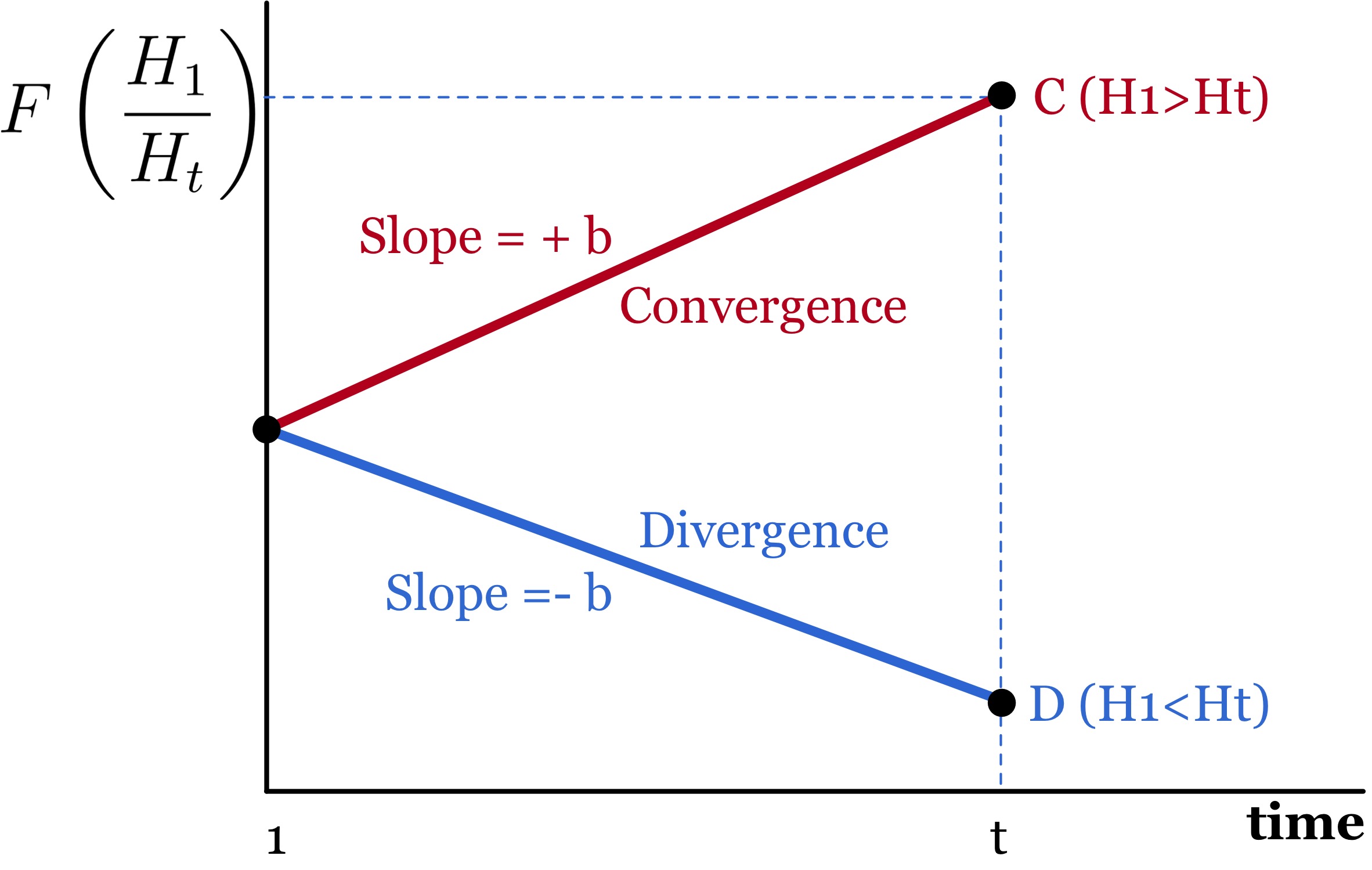 --- class: middle, center # Convergence clubs (intuition) 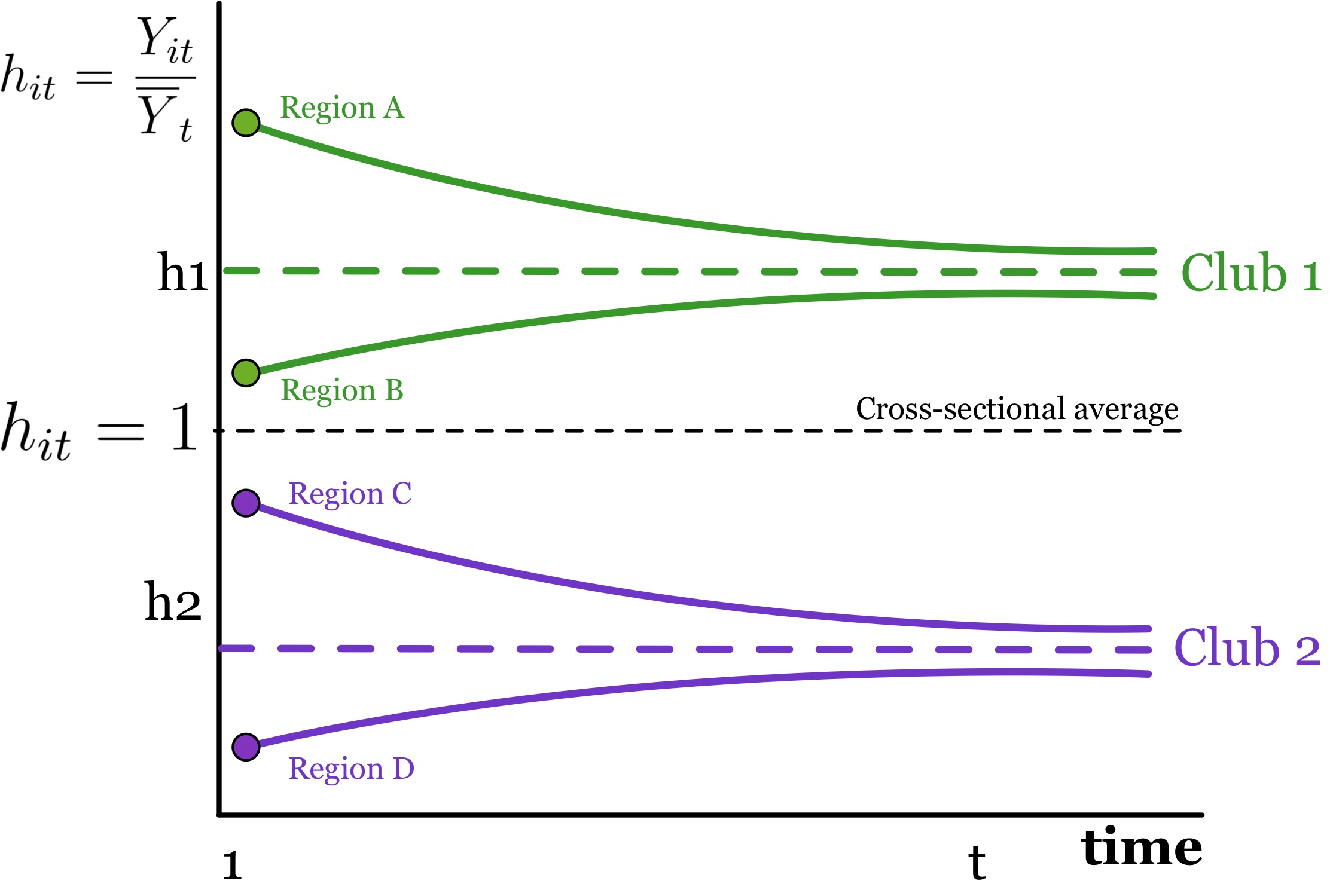 --- class: center # The task ahead ... 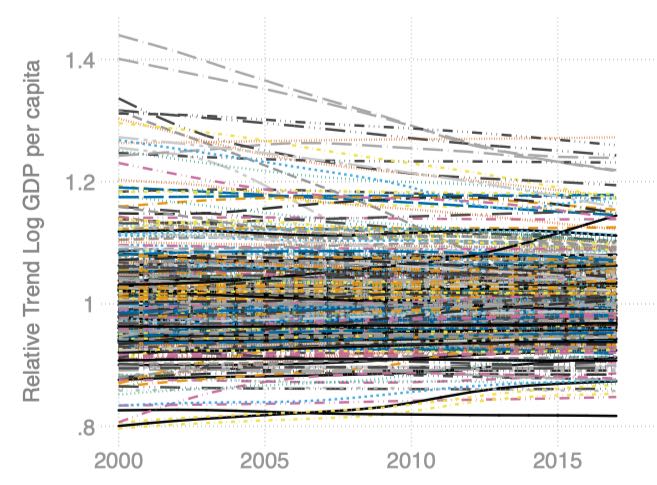 ... reevaluate convergence **beyond the average** --- class: middle, center # (3) Main results Reject the hypothesis of a common long-run equilibrium Five local convergence clubs Stronger patterns of beta and sigma convergence within clubs Lack of convergence across clubs The clubs show strong signs of spatial dependence --- class: middle, center # Reject the hypothesis of a common long-run equilibrium 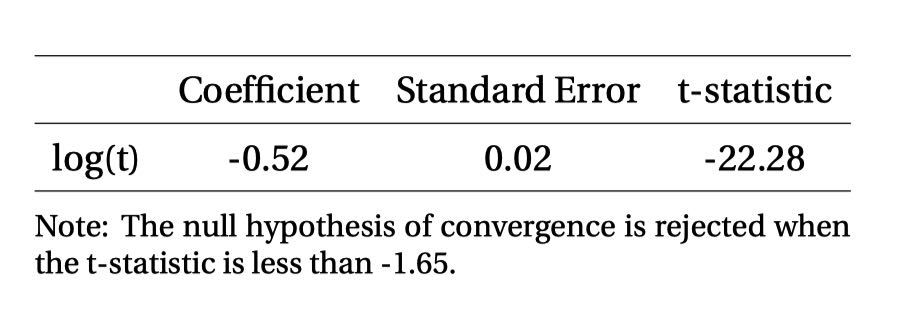 --- class: middle, center # There are five convergence clubs  --- class: middle, center # Convergence within clubs 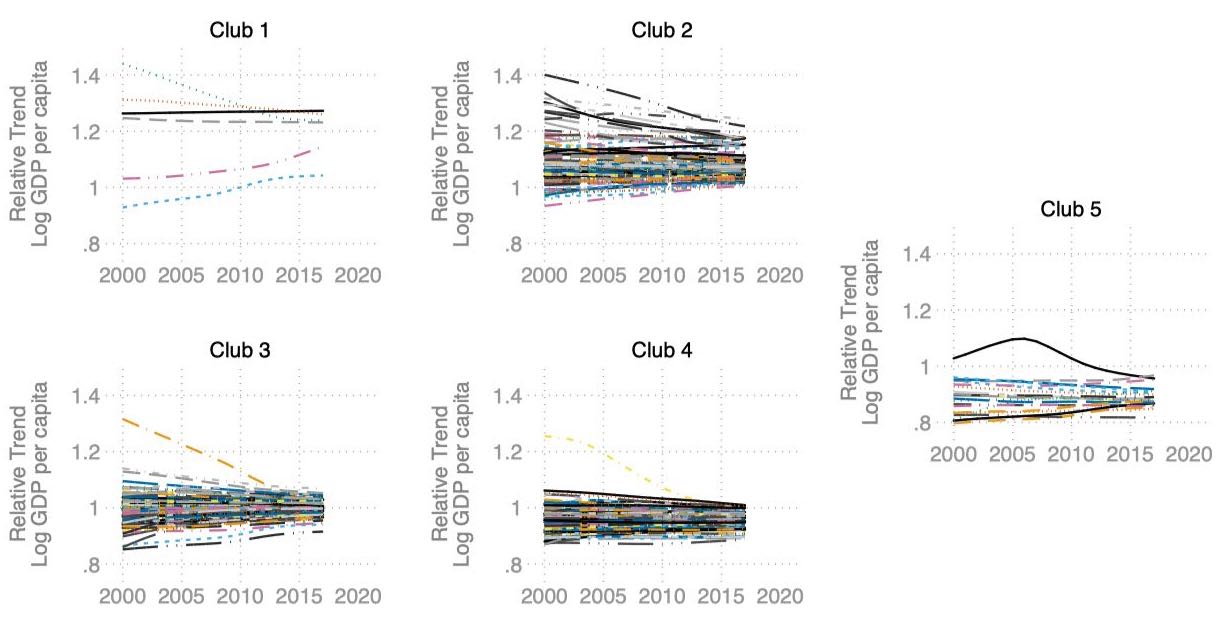 --- class: middle, center # Beta convergence within clubs 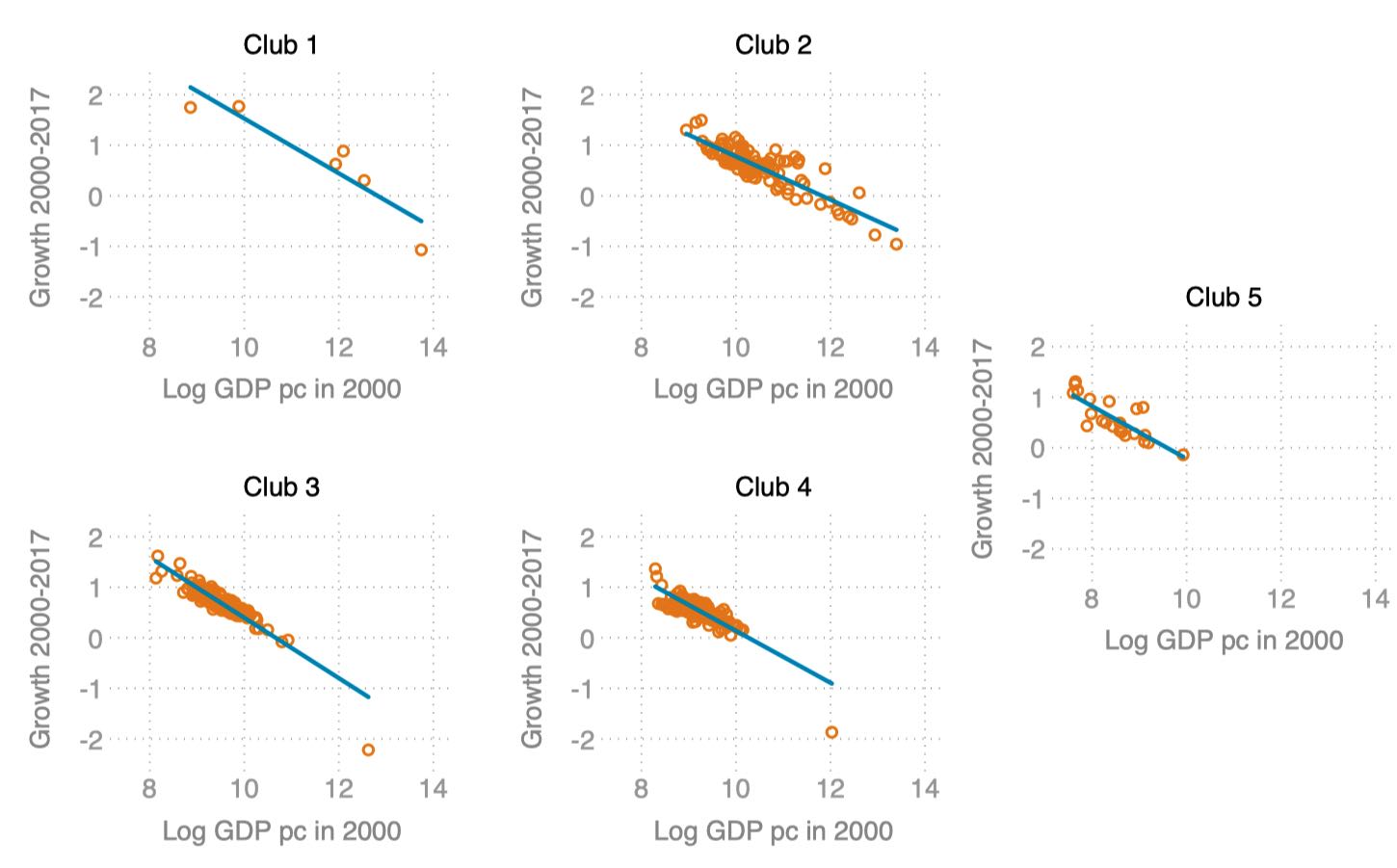 --- class: middle, center # Sigma convergence within clubs 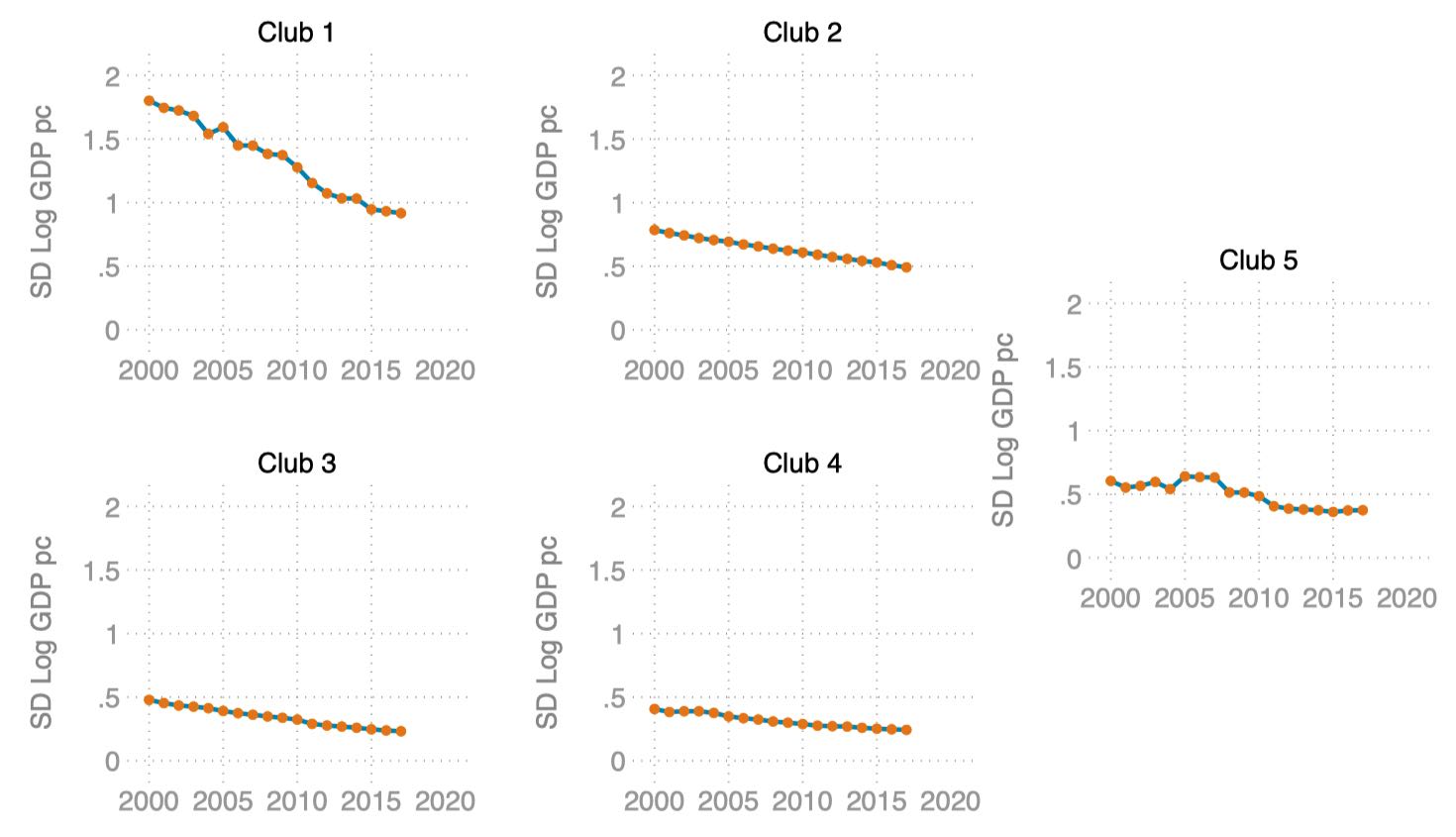 --- class: middle, center # Lack of convergence across clubs 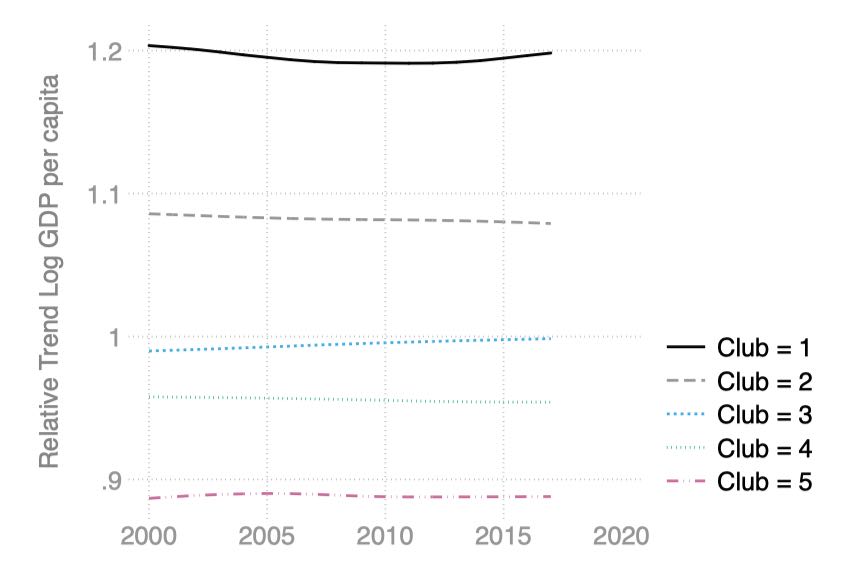 --- class: middle, center # Spatial distribution of the clubs 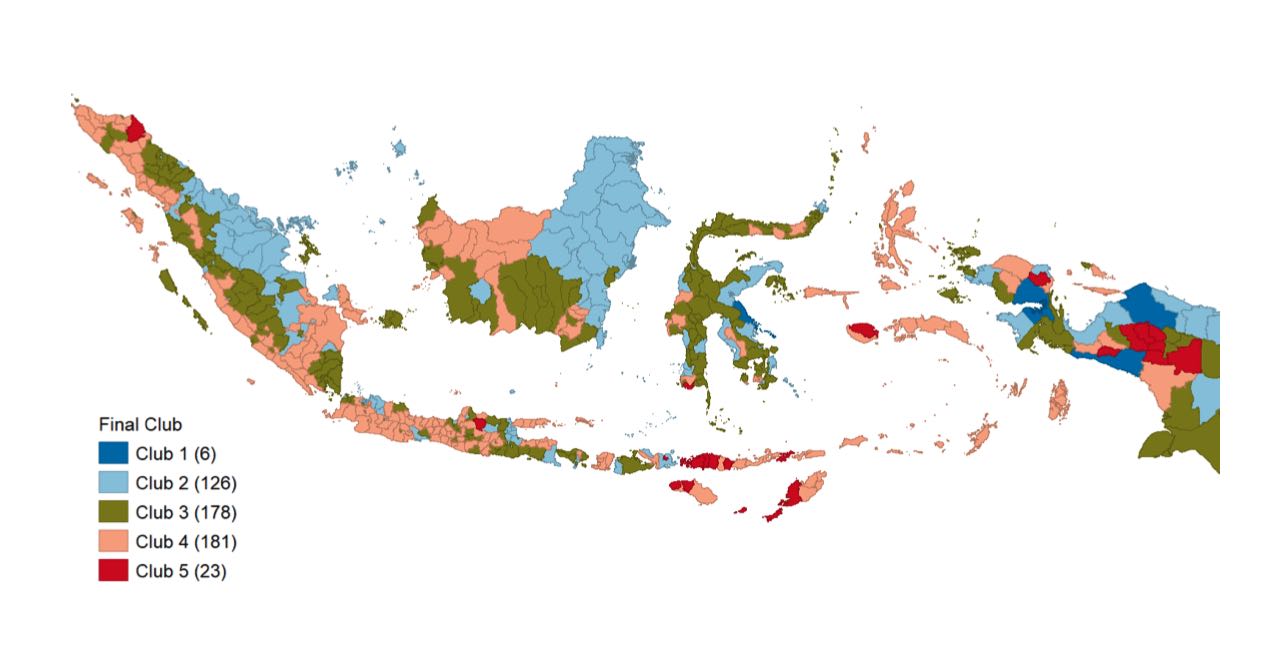 --- class: # Concluding Remarks ## Main Results: 1. On average, income **disparities have reduced** -- 2. The hypothesis of a **common long-run equilibrium is rejected**. Convergence towards **FIVE clubs** with parallel trends -- 3. Regional convergence is **stronger within clubs** -- 4. The spatial distribution of the clubs suggest a **potential role for spatial externalities** -- ## Implications, discussion, and further research - The need for an analytical **framework that focuses on regional heterogeneity** and goes beyond single summary measures -- - Convergence clubs help us identify **regions facing similar challenges** - Call for better coordination and cooperation policies both within and between clubs -- - Studying the **determinants of the convergence clubs** is the next step. --- class: center, middle # Thank you very much for your attention https://carlos-mendez.rbind.io Slides and working paper available at: https://quarcs-lab.org/research  **Quantitative Regional and Computational Science lab** https://quarcs-lab.org *** This research project was supported by JSPS KAKENHI Grant Number 19K13669 --- # References (I) - Akita, T. (2002). Regional income inequality in Indonesia and the initial impact of the economic crisis. Bulletin of Indonesian Economic Studies, 38(2), 201-222. - Barro, R., & Sala‐i‐Martin, X. (1992). Convergence. Journal of Political Economy, 100(2), 223– 251. - Esmara, H. (1975). Regional income disparities. Bulletin of Indonesian Economic Studies., 11(1), 41– 57. - Gunawan, A., Mendez, C. & Santos‐Marquez, F. (2019). Regional income disparities, distributional convergence, and spatial effects: Evidence from Indonesia (MPRA Working Paper No. 95972). - Kurniawan, H., de Groot, H. L., & Mulder, P. (2019). Are poor provinces catching‐up the rich provinces in Indonesia? Regional Science Policy & Practice, 11(1), 89– 108. - Mendez, C. (2020). Convergence Clubs in Labor Productivity and its Proximate Sources: Evidence from Developed and Developing Countries. Springer. https://doi.org/10.1007/978-981-15-8629-3 - Mendez, C. (2020). Regional efficiency convergence and efficiency clusters: Evidence from the provinces of Indonesia 1990-2010. Asia-Pacific Journal of Regional Science, 4(2), 391–411. https://doi.org/10.1007/s41685-020-00144-w - Mendez, C., & Kataoka, M. (2020). Disparities in Regional Productivity, Capital Accumulation, and Efficiency across Indonesia: A Club Convergence Approach. Review of Development Economics, Online First. https://doi.org/10.1111/rode.12726 --- # References (II) - Mishra, S. C. (2009). Economic inequality in Indonesia: Trends, causes and policy response. Colombo, Sri Lanka: UNDP Regional Office. - Phillips, P., & Sul, D. (2007). Transition modeling and econometric convergence tests. Econometrica, 75(6), 1771– 1855. - Phillips, P., & Sul, D. (2009). Economic transition and growth. Journal of Applied Econometrics, 24(7), 1153– 1185.